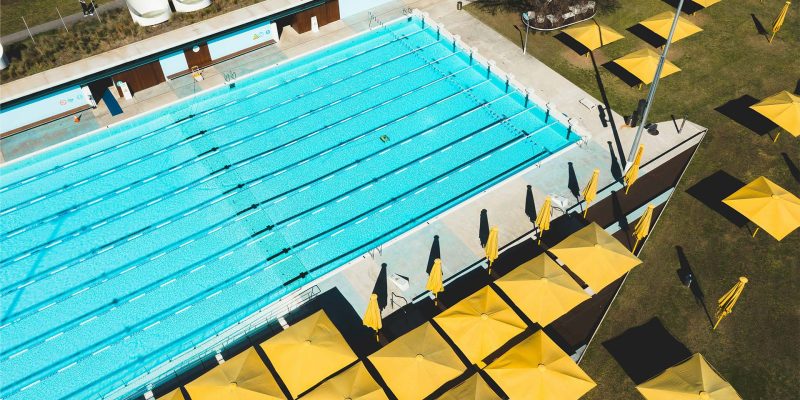The days are getting longer, the temperatures are rising, and the promise of lazy afternoons spent lounging by the pool is almost palpable. But before you can dive into that crystal-clear water, there’s a crucial rite of passage for every pool owner: the spring opening. A thorough pool opening not only ensures a clean and safe swimming environment but also sets the stage for a hassle-free peak season.
Follow this comprehensive checklist to get your pool from winter slumber to summer-ready splendor.
Phase 1: Pre-Opening Inspection (Before Touching the Water)
- Assess Pool Cover: Examine your winter cover for any tears, holes, or excessive wear before attempting to remove it. This will inform your cleaning and storage strategy.
- Inspect Pool Structure: Do a visual walk-around. Check tiles for looseness, look for any visible cracks in the plaster or tears in the liner (if applicable).
- Equipment Overview: Glance over your pump, filter, heater, and any visible plumbing. Look for obvious damage, cracks, or signs of rodent activity (like chewed wires) that might have occurred during the off-season.
Step 1: Tidy Up the Surroundings
Before removing the cover, clear the pool deck and surrounding area of leaves, branches, dirt, and any other debris. This minimizes the chances of this gunk ending up in your pool once the cover is off.
Step 2: Remove and Clean the Pool Cover
This can be a two-person job. First, use a cover pump or a simple submersible pump to remove any accumulated water from the top of the cover. Then, gently sweep or scoop off leaves and debris. Once relatively clean, remove the cover, lay it out, clean it thoroughly according to the manufacturer’s instructions (mild soap and water usually works), let it dry completely, and then store it in a cool, dry place to prevent mildew and prolong its life.
Step 3: Initial Debris Removal from the Pool
Despite your best efforts with the cover, some debris will likely have found its way into the pool. Use a long-handled leaf rake or skimmer net to remove as much of the large, visible debris (leaves, twigs, etc.) as possible. If the water is particularly murky or full of heavy debris, you might want to do this before adding too much new water.
Step 4: Fill ‘Er Up!
Using a garden hose, fill the pool water to its proper operating level, which is typically about halfway up the skimmer opening.
Step 5: Revive the Circulation System
- Remove all winterizing plugs from skimmer lines, return lines, and equipment (pump, filter, heater).
- Re-install drain plugs on the pump, filter, and heater.
- Open the necessary valves for proper circulation (skimmer lines, main drain, returns).
- Prime your pool pump according to its instructions and turn on the filtration system.
- Once the system is running, check thoroughly for any leaks around the equipment.
- Let the water circulate for a few hours, then clean your filter: backwash sand or D.E. filters, or clean cartridge filters.
Step 6: The Grand Clean-Up
With the water circulating, it’s time for a deep clean.
- Brush Thoroughly: Manually brush the pool walls, floor, steps, and any coves to dislodge dirt, algae, and biofilm that has settled over the winter.
- Deploy Your Pool Cleaners: This is where your automated pool cleaners come into play. For this initial heavy-duty clean, a robust robotic pool cleaner is an excellent choice. It can systematically scrub surfaces and vacuum up the debris you’ve brushed loose, along with finer particles. Even if you don’t own one of the best pool cleaner models with advanced scrubbing, any reliable cleaner will significantly reduce your manual labor.
Step 7: The Chemical Balancing Act
Getting your water chemistry right is crucial for a safe and inviting pool.
- Initial Test: Use a good quality test kit to check the levels of pH, total alkalinity, calcium hardness, and any existing sanitizer.
- Adjust Systematically:
- Adjust Total Alkalinity first (target range: 80-120 ppm).
- Then, adjust pH (target range: 7.4-7.6).
- Next, adjust Calcium Hardness (target range: 200-400 ppm, depending on pool type).
- Shock the Pool: Once alkalinity and pH are in range, it’s time to shock (superchlorinate) the pool. This will oxidize contaminants, kill bacteria and algae, and establish an initial sanitizer residual. Follow the shock product manufacturer’s instructions carefully regarding dosage and safety. Run the filter continuously after shocking.
Step 8: Final Checks & Ongoing Maintenance
- Retest: After 24-48 hours (or as per shock instructions), retest your water chemistry and make any final, minor adjustments.
- Establish Routine: Set up your regular filter run times, cleaning schedule (daily/weekly tasks for your pool cleaners), and water testing routine.
- Safety First: Ensure all safety equipment—ladders, handrails, diving board (if applicable), fences, gates, and alarms—are secure, in good condition, and functioning correctly.
Dive Into a Great Season!
While it involves several steps, a methodical pool opening is the key to a summer filled with fun, relaxation, and minimal problems. By following this checklist, you’ll ensure your pool is clean, safe, and perfectly prepared for peak season enjoyment. Happy swimming!

Comments